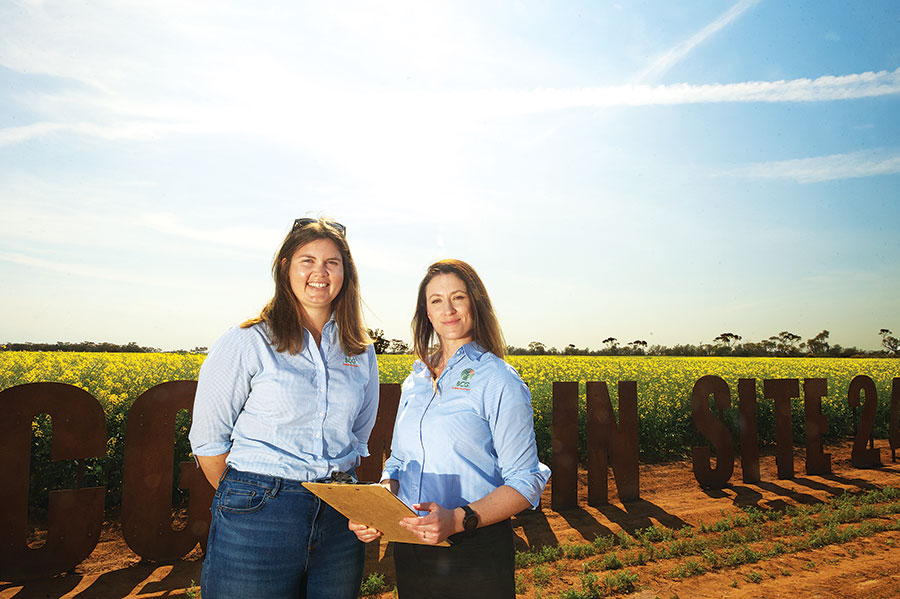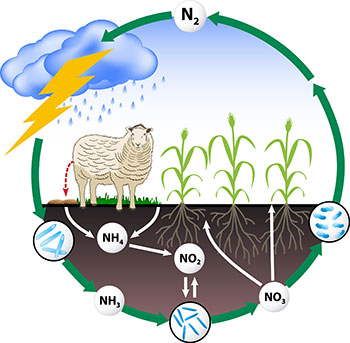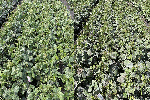Key points
- While nitrogen management may be perceived as challenging, handy decision-support strategies can be used to simplify decision-making
- Some of the most effective strategies that can improve yields and return on investment include a seasonally responsive strategy using Yield Prophet® and a nitrogen banking strategy
- Both have been evaluated in Birchip Cropping Group trials
Environmental considerations can make nitrogen management a particular challenge for southern region growers, prompting researchers to encourage greater use of decision-support strategies.
Birchip Cropping Group (BCG) senior research manager Dr Yolanda Plowman says addressing negative nitrogen balances could potentially boost wheat yields by as much as 40 per cent.
Dr Plowman says many growers often hesitate to apply more nitrogen because of concerns about a crop haying off or environmental losses through leaching or volatilisation, not to mention the high cost of urea.
Speaking in a video presentation to the GRDC Grains Research Update at Sea Lake in July, she referred to a grower survey carried out as part of the GRDC $30 million RiskWi$e project launched last year.
The survey found more than half of participants perceived nitrogen management decisions as somewhat or very difficult.
“It doesn’t need to be like that, because we’ve got decision-support systems that can help identify strategies for approaching nitrogen decisions that suit a particular management style,” Dr Plowman says.
That includes Yield Prophet® and nitrogen banking.
Yield Prophet® matches nitrogen input to potential yield for the season based on climate modelling and requires a higher investment of time and data, making it better suited to growers who want to take a more active approach to nitrogen management.
Nitrogen banking is a simpler strategy based on targets that are easy to calculate and the assumed carryover of soil nitrogen from year to year to provide a small nitrogen buffer.
BCG is testing both in trials – along with other strategies such as applying the national average rate of 45 kilograms per hectare each season and replacing only the amount of nitrogen removed in the grain – to establish risk and reward profiles.
“Both are really powerful for improving decision-making and strategies.”

BCG researchers Kate Finger (left) and Dr Yolanda Plowman (right) at the BCG’s trial site outside Nullawil, north-west Victoria. Photo: Brad Collis
Nitrogen trial results
A trial from 2018 to 2023 at Curyo, in north-west Victoria, where annual rainfall averaged 340 millimetres and growing season rainfall 230mm, found the Yield Prophet® 25 per cent and Yield Prophet® 50 per cent strategies showed the most promise.
 Source: Wikipedia
Source: Wikipedia
Yield Prophet® 25 per cent is based on a higher-yielding finish (decile 8 to 9 in Yield Prophet® Lite). Yield Prophet® 50 per cent is based on a median finish (decile 4 to 7 in Yield Prophet® Lite) – see Table 1.
Yield Prophet® 25 per cent delivered six-year average yields of 3.1 tonnes/ha and Yield Prophet® 50 per cent 3.2t/ha, just ahead of nitrogen banking 125 with average yields of 2.9t/ha. (Nitrogen banking 125 equates to 125kg/ha of nitrogen when adding soil mineral nitrogen to fertiliser. See Table 1.)
After assessing soil nitrogen levels, researchers concluded there was a higher chance of loss from Yield Prophet® 25 per cent, which had a balance of 114kg/ha after the six years, compared to 45kg/ha in Yield Prophet® 50 per cent.
“Taking into consideration grain yield, cumulative partial nitrogen balance average over the six years and downside risk, Yield Prophet® 50 per cent was shown to be the optimal nitrogen strategy for this environment,” Dr Plowman says.
“Where decision-makers are looking for a simpler strategy, nitrogen bank 125 was the optimal simplified nitrogen strategy for economic return over the six years at the site. The potential downside using a nitrogen bank approach is that you may under-capitalise on seasonal high profit opportunities if you’re always sticking to the formula.”
Yield Prophet® 50 per cent also recorded the highest average gross margin across the six years of $791/ha, and was one of only two strategies that avoided a loss in any year.
But Dr Plowman says it is important to note these strategies may not suit areas with a different rainfall pattern, such as those that were summer rainfall dominant.
Table 1: Nitrogen management systems and treatments used in the experiments.
| Strategy | Explanation |
|---|---|
| Nil | No nitrogen applied other than in starter fertiliser |
| Replacement | Nitrogen removed in grain applied as fertiliser |
| National average | 45kg/ha of nitrogen applied each season |
| Nitrogen bank (NB100) | Soil mineral nitrogen + fertiliser = 100kg/ha of nitrogen |
| Nitrogen bank (NB125) | Soil mineral nitrogen + fertiliser = 125kg/ha of nitrogen |
| Nitrogen bank (NB150) | Soil mineral nitrogen + fertiliser = 150kg/ha of nitrogen |
| Yield Prophet® (YP100 per cent) | Nitrogen applied at a level to achieve yield potential under lowest-yielding finish on record (decile 1 in the Yield Prophet® Lite scenario) |
| Yield Prophet® (YP75 per cent) | Nitrogen applied at a level to achieve yield potential under a lower-yielding quartile finish (decile 2-3 in the Yield Prophet® Lite scenario) |
| Yield Prophet® (YP50 per cent) | Nitrogen applied at a level to achieve yield potential under a median finish (decile 4-7 in the Yield Prophet® Lite scenario) |
| Yield Prophet® (YP25 per cent) | Nitrogen applied at a level to achieve yield potential under a higher-yielding finish (decile 8-9 in the Yield Prophet® Lite scenario) |
More information: Dr Yolanda Plowman, yolanda.plowman@bcg.org.au
GRDC Update Paper Nitrogen strategies for N banking

























































